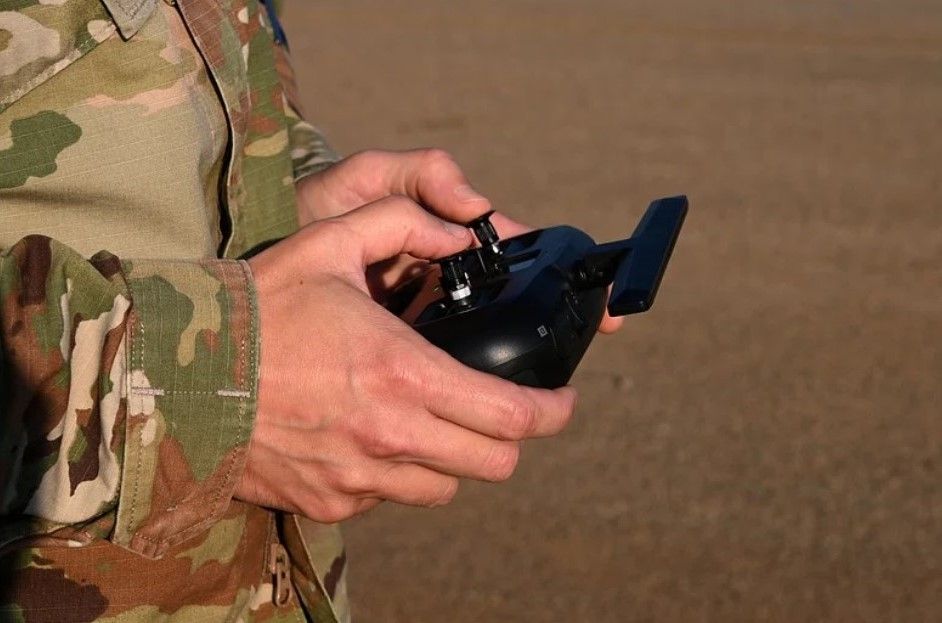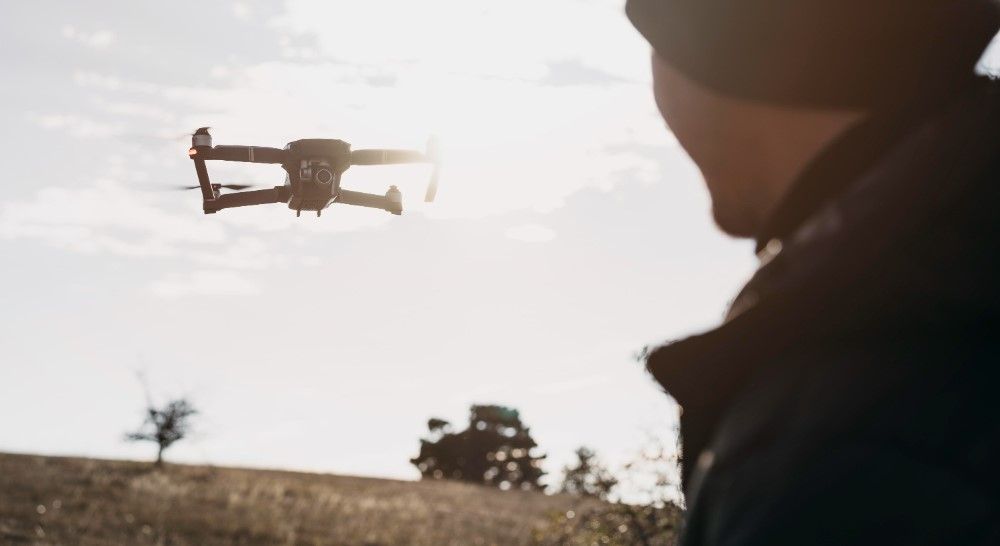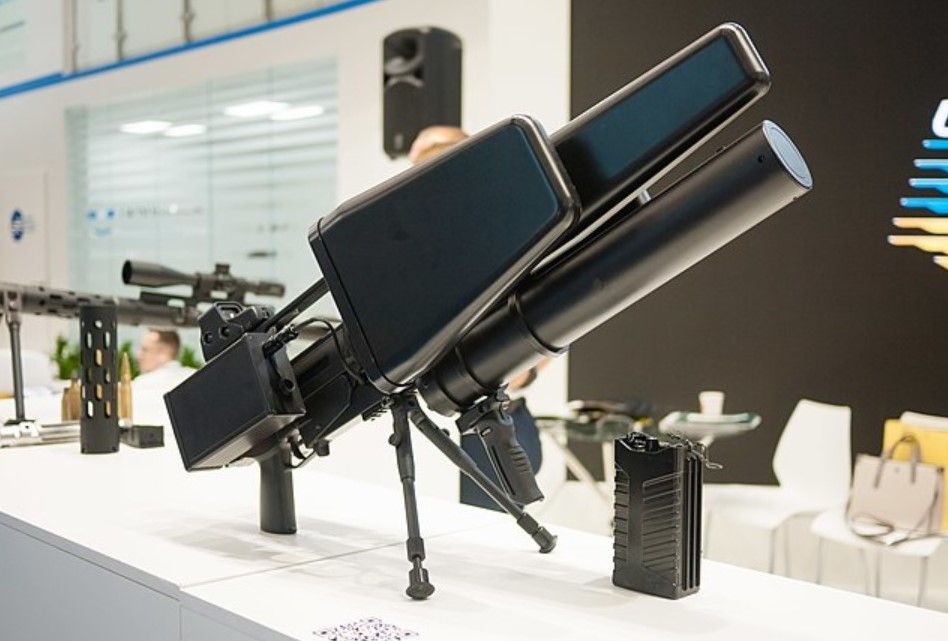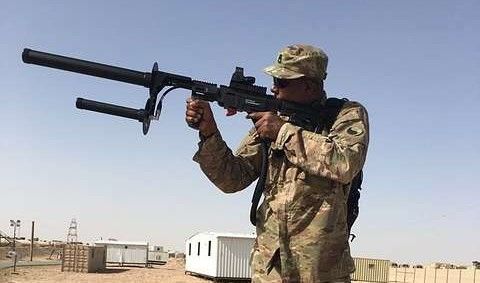New Defence for Anti-Personnel Drones
A look at the new counter-drone tactics, devices, and spending being used to combat the rise in power of smaller anti-personnel drones.

Such is the influence of drones on the battlefields of Ukraine that modern armies are rushing to devise tactics and hardware capable of protecting their soldiers.
While defenders against larger drones have a decent array of weapons, such as jamming devices and surface-to-air missiles, to protect themselves from larger uncrewed vehicles, the increasing impact from smaller first-person-view drones is drawing a response from military chiefs.
The action is needed due to the rising death toll from small, exploding drones—uncrewed airborne machines capable of dropping a grenade or carrying a charge powerful enough to kill a person. This has been brought about by improved drone technology as well as increasingly skilled pilots capable of flying into fox holes or dropping munitions through openings in armoured vehicles.
In-the-field commanders have also found it necessary to designate a soldier to ride on the back of military vehicles driving close to the front to shoot down any incoming drones should electronic warfare (EW) systems fail to stop them.
As Sam Bendett, a consultant at the Washington-based Center for Naval Analyses, notes, “First-Person-View (FPV) drones have become much more effective via technical improvements and pilot skills.” At the same time, defences against these terrorising weapons are not working as well.
“Many tactical electronic warfare and jamming systems don’t work effectively or as intended all the time,” Bendett adds.

In response, individual soldiers have devised tactics and sometimes even homemade weaponry to defend themselves against the threat of small drones during the last 100 metres of attack. While some soldiers have been given jamming devices or shotguns to protect themselves, these rely on a great deal of luck, especially if the pilots are very experienced.
For example, according to a recent Defense News report, “Russian soldiers [are] making DIY anti-drone ammunition by using the pellets taken from buckshot rounds and repurposing them to be used in normal 5.45x39mm rounds used in assault rifles.”
Even if a soldier is fortunate enough to hit the tiny, fast-moving target, survival will still depend on the strength of drone construction and the amount of damage caused by the projectile.
“Larger pellets offer more mass but the energy is delivered over a bigger surface area – the larger the pellet, the less density you have in the air, this is known as ‘pattern,’” explains Paul Bradley, a ballistics expert at Hexagon Ammunition. “A dense, wide pattern increases hit probability, but smaller pellets reduce terminal effect.”
The success of using pellets depends on the type of drone being fired on. If it is a simple hobby drone made from China, then a pellet may be sufficient to ground it as it is typically made from flimsy plastic. Racing drones, however, are not only much faster and therefore harder to hit but are also made from stronger carbon-fibre with propellers made from more flexible plastic and might require a strike from something even more powerful than a shotgun.
“Drones require more energy on target when they are in the air,” adds Bradley. “When they are hit they simply move as they have very little inertia – the movement robs the pellets of kinetic energy, rather like punching something in zero gravity, less energy is transferred to target as it is used up moving it backward.”

Other nations are also taking the drone threat to individual soldiers seriously. The Royal Dutch Army, for example, recently announced that it will spend up to €250 million to buy each member of the infantry a personal anti-drone kit. The expenditure was deemed necessary as larger systems were, according to the Dutch State Secretary for Defence Gijs Tuinman, “neither efficient nor effective.” This was leaving soldiers to use their regular firearms to try and shoot down incoming drones even though the chances of hitting such a small, fast-moving target was low.
While details have yet to be confirmed, Defense News reports that the counter-drone kit is likely to include, “… electro-optical aiming devices for personal weapons, such as targeting lasers, which would significantly increase targeting accuracy against small drones at a distance of 200 meters.” As well as “portable jammers to disrupt drone signals, and portable radio-frequency sensors that allow for earlier spotting of a possible drone threat.”
“Military personnel may increasingly face attacks or unwanted reconnaissance using small unmanned systems, including drones,” notes Tuinmanin an open letter to the Dutch Parliament to explain the spending. “The ability to take out UAS is essential to the security of our military and the missions and tasks they perform.”

As the battlefield continues to evolve, the rise of FPV drones has introduced a new layer of complexity and danger for individual soldiers, challenging traditional combat strategies.
Like all new military threats, military strategists are devising innovative tactics and developing advanced hardware designed specifically to counteract the menace posed by these miniature uncrewed drones.
While troops on the ground are looking to new tactics, other militaries are integrating electronic warfare systems into standard issue infantry gear or are training platoons in swarm tactics that leverage their resources against aerial threats.
For now, it appears, that there is no one single solution to defending against smaller drones. Such is the power of this new weapon, military chiefs and individual soldiers on the ground will be looking for answers for many years to come in how to stay safe against the new aerial threat of small drones.

